Investigating how polar animals stay warm
This week’s playful preschool theme is all about Polar Animals, and we’re investigating how they stay warm. Now, we’ve not had snow yet but we’ve had some frosts, and the pond and the water left in buckets as well as the rain water have iced over so we now getting a feel of how cold it could be for polar animals.

Playful preschool is a weekly themed post on Rainy Day Mum linked up with a group of bloggers. You can follow the other posts on social media using the hashtag #playfulpreschool. At the end of the post we have links through to other Polar Animal Inspired posts for preschoolers.
When doing science investigations with preschoolers, it’s less about teaching them science facts, and more about the questions, the methods used, and getting them to talk about their findings.
With this investigation, I started off by asking the question “How do Polar Animals keep warm?”, and we went from there.
Materials needed to investigate how polar animals stay warm
We have included affiliate links to products and resources we recommend
Ice or Snow
Cold Water
Learning Objectives
- Ask questions, and hypothesize answers
- Investigate ways in which polar animals stay warm
- Look at blubber/fat as an insulation for polar animals and those that live in cold environments
More Preschool Ideas for Hands-on Learning
 Whether you preschool at home or just want some hands-on educational activities for your preschoolers aged between 3 and 5 our collaborative ebook – Three to Five Playful Preschool is full of inspiration.
Whether you preschool at home or just want some hands-on educational activities for your preschoolers aged between 3 and 5 our collaborative ebook – Three to Five Playful Preschool is full of inspiration.
With ideas for Maths, Language Development, Science, Art and Play there are ideas that you can dip into throughout the year to either support your child’s learning away from their preschool setting, extend their learning or carry out your own preschool at home. Find out more by heading to our information page or Buy Now on the button below

Preparation
If, like us, you are unlucky, and don’t have snow or ice this winter, you need to have a stock of ice in the freezer to use. If you have snow and ice on the ground, gather some a little while before you start the investigation.
Investigating how Polar Animals Stay Warm
Start off by asking your preschooler the question: “How do you think Polar Animals stay warm?” This question caused my first “OH” moment, as the reply was “What are polar animals?”, so be warned you may have to do some background research before starting this investigation with your child. Once you have established what Polar Animals are and where they live, as well as a little about the environment, you can pose the question again.
It was interesting listening to the children’s answers. The first was: “They build dens to hibernate like polar bears do when it’s really dark most of the day.” I had my older (5 years old) with us as well, and this was his answer. “They have big thick wool on their skin” was the answer from T, my 3-year-old. So we had some predictions, the den building and the thick wool on their skin, which I explained was fur.
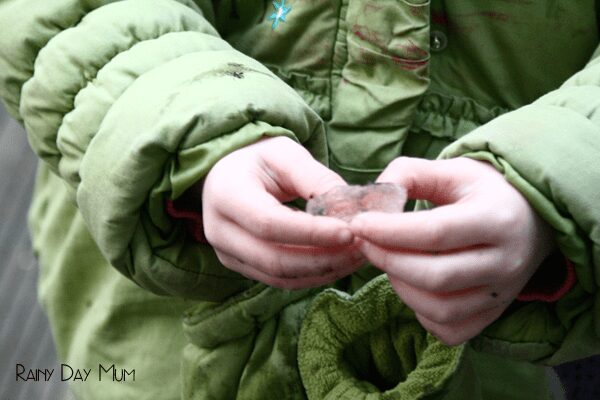
Next, it was time to feel some ice/snow – a rare occurrence but we had some ice in the garden so the kids quickly grabbed it and discovered it was COLD. If you don’t have any ice then it’s time to get out an ice cube and let them hold it in one hand to discover how cold it is and then compare that hand to their other hand.
We then quickly investigated T’s theory that it was the fur on them that kept them warm. She put on her wool gloves and headed outside – “YEP Mummy my hands are warm” – I then asked her to hold the ice again with her glove on. Very soon the glove became wet. When wet, it became cold, and so did her hands. The first conclusion from both of them: if it’s dry, their fur will keep the animals warm, but if wet, they would be really cold.
We then talked about the den building: What the den was made out of? Where would they be in the den? Another conclusion: the den would keep the animals dry so they would be warmer, but as they were on the snow and ice they would still be cold.

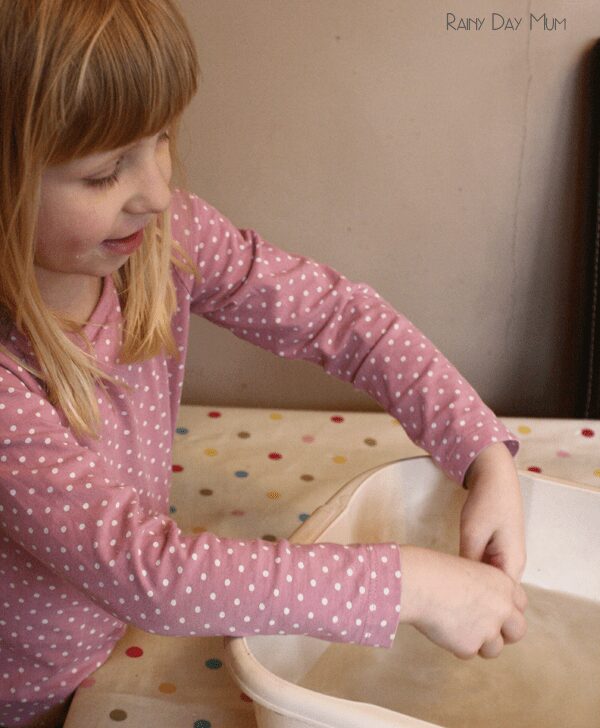
Then we filled a washing up bowl with cold water added extra ice and we put our hands into the bucket. It was cold and we couldn’t last long in the water.
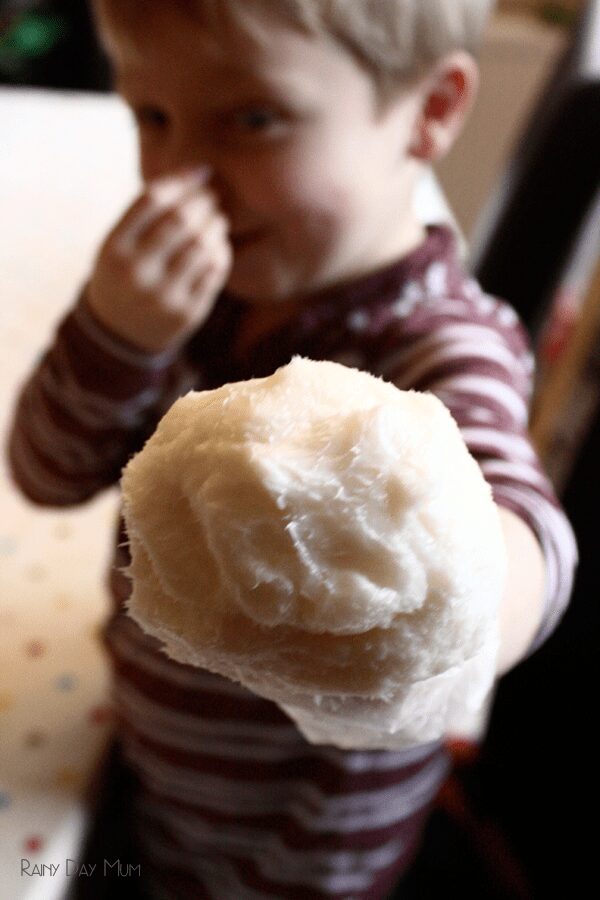
I then put a plastic glove on each of the kids hands – more to protect them from the fat than the cold and got out a packet of Lard. Wearing gloves myself, I got them to make a fist, then covered their fisted hand with the lard and formed a ball.
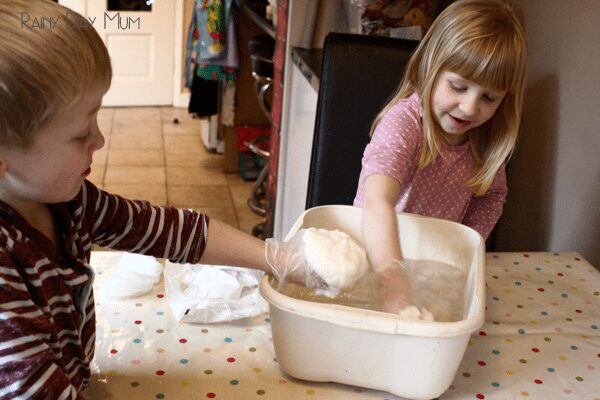
They then put their hands back into the icy water, and were shocked at how warm their hands stayed. They swished them around and kept them submerged in the water for well over a minute without feeling the cold.
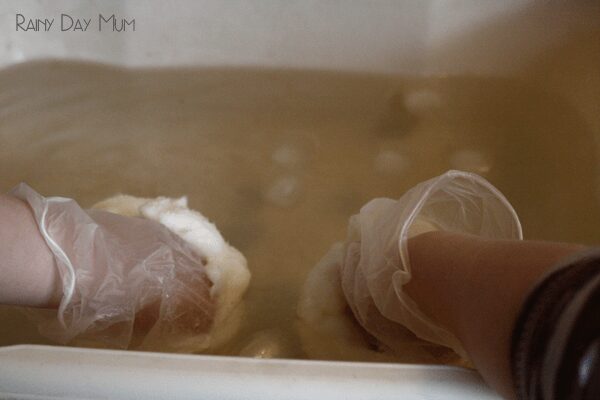
When they were ready, we scraped the lard off the gloves, and put it into a pot to make some bird seed feeders later on and then drew conclusions: Polar Animals stay warm when it’s dry with their thick fur coats, and if it’s wet they have a layer of fat, called blubber, that insulates their bodies from the cold even in water.
More Polar Animal Themed Activities for Preschoolers
Looking for more Polar Animal Inspired Playful Preschool Ideas

Check out these polar animal inspired learning with the links below.
Polar Animal Literacy Activities:
Walrus Dive for Letters from Capri + 3
Polar Bear Paw Walk Preschool Alphabet Game by Growing Book by Book
Penguin Plunge Move and Learn Alphabet Activity by Mom Inspired Life
Polar Animal Science and Sensory Activities:
How do Animals Stay Warm by Rainy Day Mum
Penguin Sorting Sensory Bin by Powerful Mothering
Arctic World by Learning 2 Walk
Seek and Find Game by Fun a Day
Polar Animal Movement Activities
Polar Animals Gross Motor Games by Still Playing School
Polar Animal Math Games and Activities:
Polar Bear Math Game by The Educators’ Spin On It
Counting to 5 with Penguins by Life Over C’s
Polar Bear Activities and Books for Preschool by The Preschool Toolbox Blog


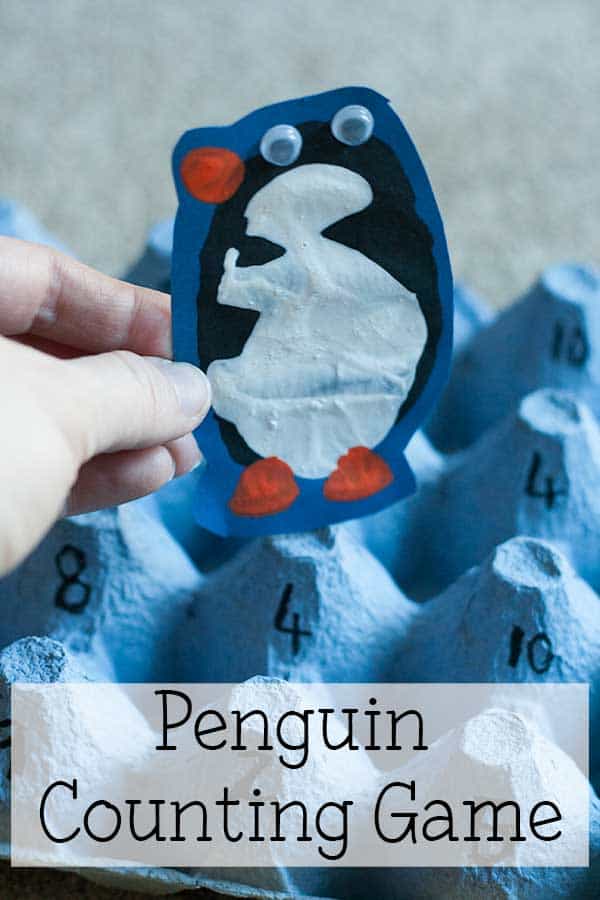
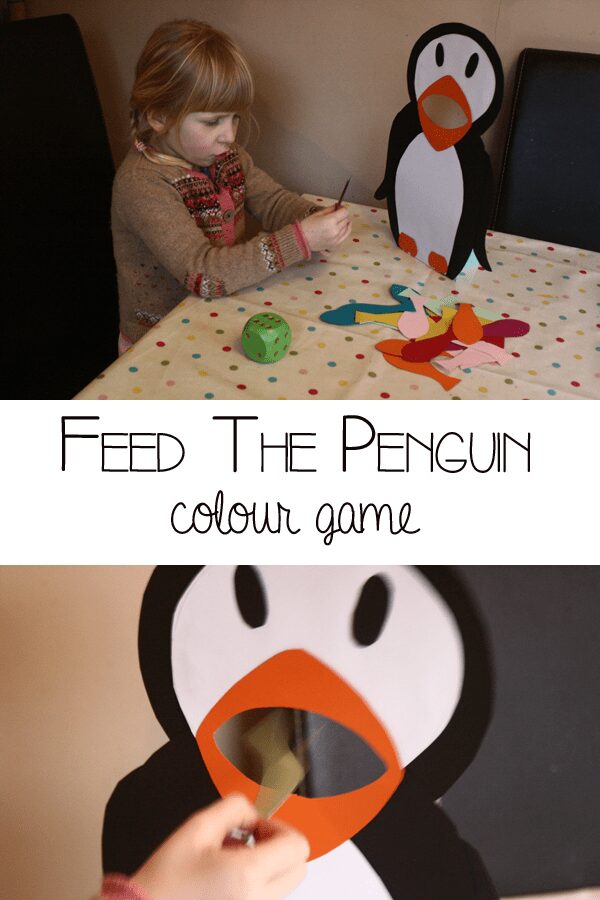
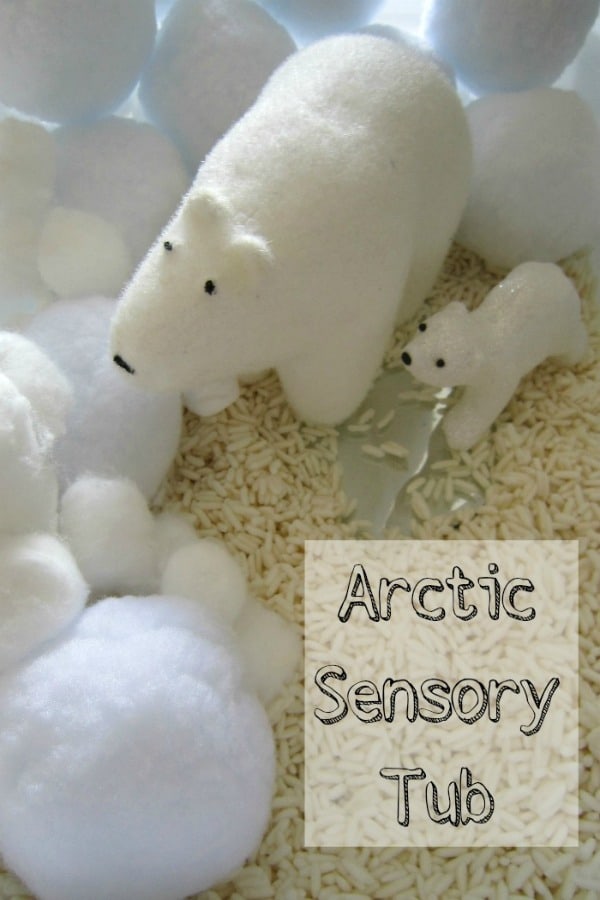
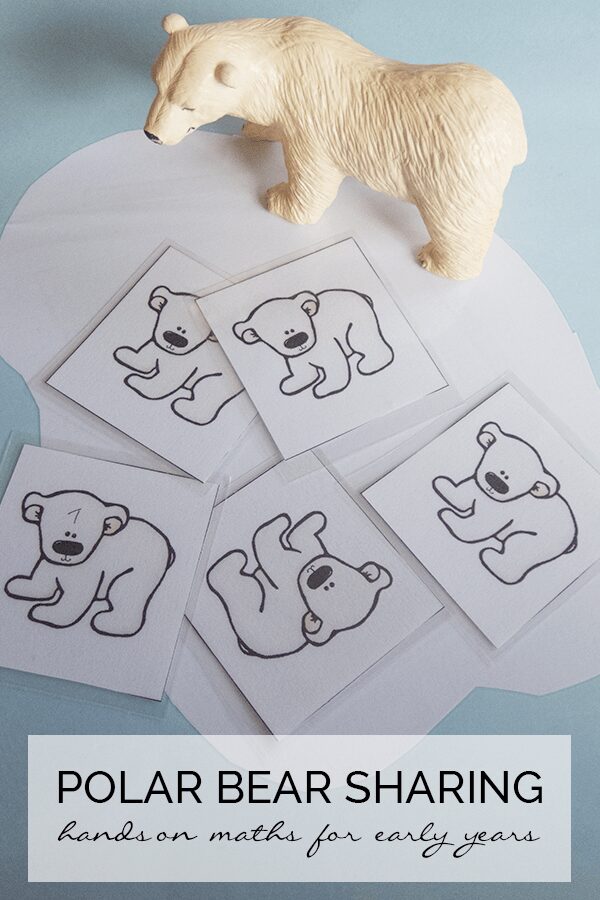
We are going to try this! So neat!
this is such a great experiential learning activity. We will have to try it out!
We really need to try this one!
Super fun and informative! Now this is something I want to try.
FUN! I’ve been wanting to try this with the kids.